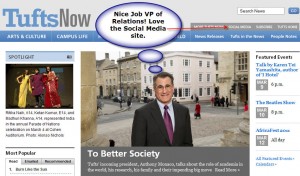How to create a cost model and the thinking behind the model-Part 1
Introduction:
For the past several years I have become (dare I say) an expert at modeling the cost of IT projects. Recently, I was asked to teach “how to create an IT cost model”.
Here are some thoughts for how to begin to create a cost model.
(NOTE: the steps for creating a model could be easily written down but (I think) the more important part is the thinking behind the steps (being analytical)).
The following words (and I apologize now for any grammatical errors or for sentences that do not make sense) will make an attempt to spell out the steps and the thinking. At this point I will get down my thoughts and not worry too much about editing. Oh and by the way, my experience has been in large (+300) IT organizations in the Higher Ed industry.
Part 1: Getting Familiar with the Project, Organization, and the People involved
A. Learn your environment. This means learn about your organization or project. How is it structured? Do folks collaborate well? If collaboration is not great or even good, this will make decision making hard and the project will move slower thus taking more time and more money. This leads me to two important components of a cost model: time and people.
Let me elaborate a little more. Here are some important components to keep in mind while you are building your cost model.
1. How many people and a what level of expertise (Sr. vs. Jr.) will the project require?
2. How long will you need them (months and level of effort (full-time vs. part-time))?
3. Is the project changing the way business is conducted? (Does the project include business process change and will it require change management?) This question gets to complexity. The more complex your project is the more time it will take and thus the more money it will cost.
4. Is the project implementing NEW technology to the organization? (Ex. a JAVA based application and none of the current staff know JAVA) This question get to the amount of training that will be required either before or after the project.
5. Are the right people involved in the project? E.g. are there stakeholders, business owners, and an executive champion? I’ve seen a lot of software get built and not get used for the sole fact that the business owners were not involved.
B. Learn about the project. How well organized is the project? This is a good time to learn about Project Management. Here is a pretty simple explanation to view. A better managed project will help control costs. If your organization has a strong Project Management methodology it will be better able to help you construct a cost model.
If the project is not very well organized be sure to keep this in mind when you are adding in a contingency.
Contingency—every project will need some amount of money set aside for all the unknowns and the things that you thought would go one way but went completely different. In the past I’ve added either 10%, 15% or maybe even 20%. You will get management push back so be sure to document why you are adding 20% instead of 10. Keep in mind management will change what you have done but you can always say…”I told you so…” but only if you have documented your thinking.
Assumptions–your cost model will have them. You are building a model which means there are a lot of things you will not know but in order to build the model you will need to make an “educated” guess for how you think the things will be done. If you are a novice you will need to find someone who you can ask.


